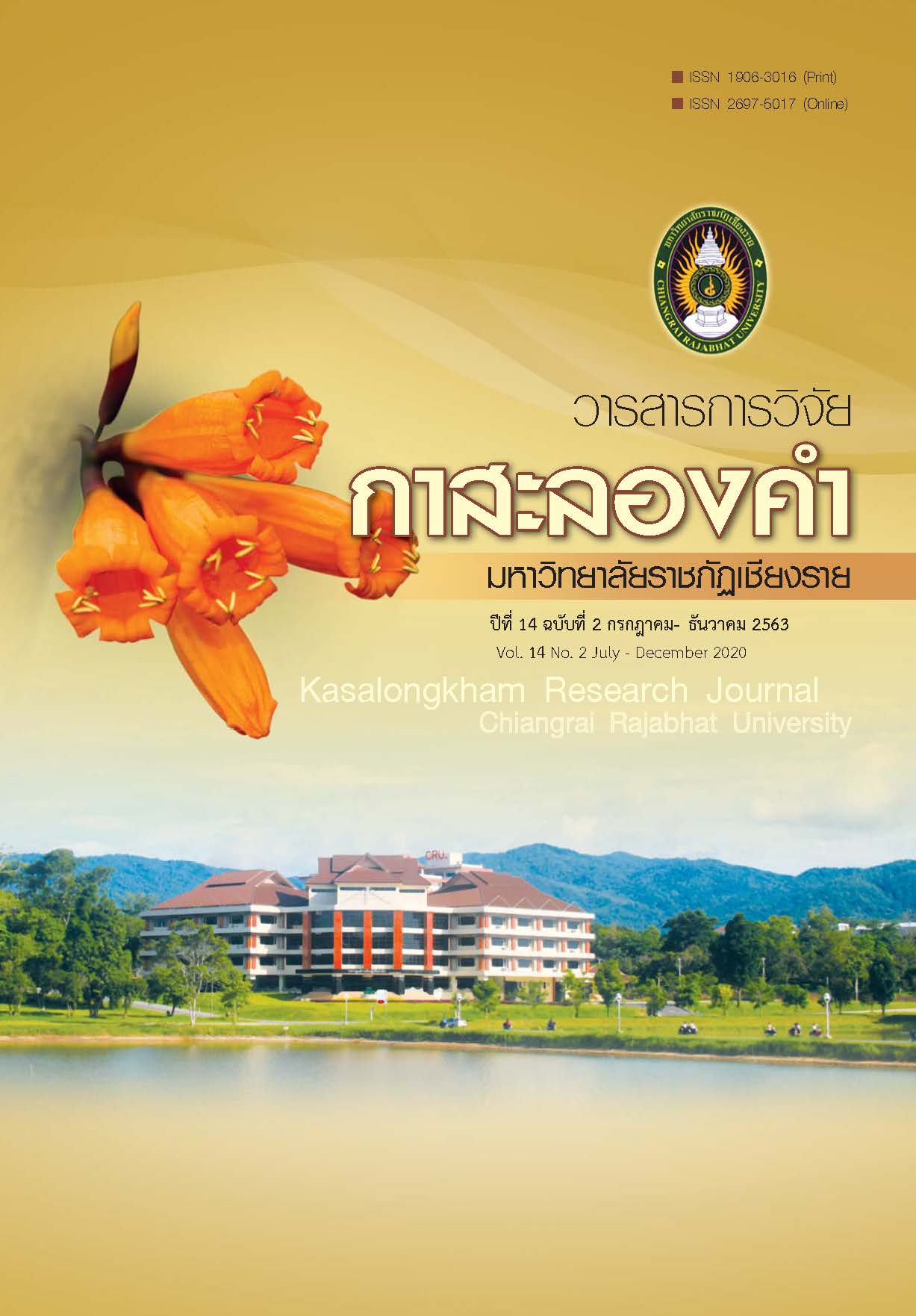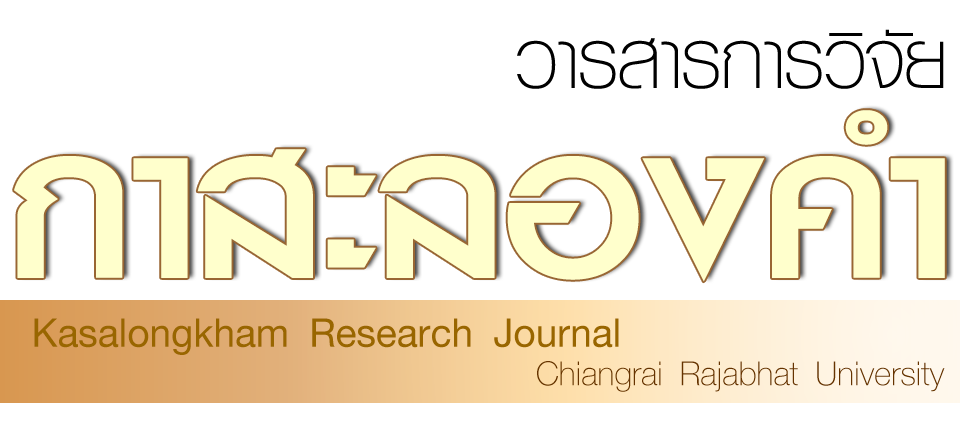การประยุกต์ใช้บัตรคำเพื่อสอนภาษาไทยระดับสูงแก่ผู้เรียนชาวจีน
คำสำคัญ:
flash card, teaching Thai language for foreigner, advance learner, Chinese, participatory methodบทคัดย่อ
วัตถุประสงค์ของบทความนี้เป็นไปเพื่ออธิบายวิธีการประยุกต์ใช้บัตรคำแก่ผู้เรียนชาวต่างประเทศในการสอนภาษาไทย ประชากร คือ นักศึกษา 15 รายที่เรียนในระดับ 4 ของหลักสูตรเร่งรัดภาษาไทยสำหรับชาวต่างประเทศ เครื่องมือในการวิจัย คือ บัตรคำ 6 ประเภท ประกอบด้วย อาหาร บุคคล วัน สิ่งของ คำสร้างคำถาม และสถานที่ ผลการศึกษาพบว่า การประยุกต์ใช้บัตรคำมี 7 ขั้นตอน ประกอบด้วย การทบทวนคำศัพท์ การจัดกลุ่มผู้เรียนใหม่ตามความหมายของบัตร การพูดเร็ว การจัดประเภทของบัตรคำลงในกล่อง การสร้างย่อหน้าด้วยคำศัพท์จากบัตรคำ การรวมกลุ่มใหม่เพื่อช่วยกันเล่าเรื่องจากบัตรคำของสมาชิกในกลุ่ม ผลลัพธ์การเรียนรู้หลังการประยุกต์ใช้พบว่า ผู้เรียนมีส่วนร่วมกับกิจกรรมทุกคน และผู้เรียนมีวิธีการที่จะช่วยเพื่อนให้จดจำประโยคเพื่อให้เล่าเรื่องได้สำเร็จ สำหรับการทวนสอบผลลัพธ์การเรียนรู้ทำขึ้นหลังกิจกรรมเสร็จสิ้นแล้ว 2 วัน พบว่า ผู้เรียนยังสามารถจดจำคำ ความหมาย และเขียนเล่าเรื่องโดยใช้บัตรคำเหล่านั้นได้อย่างถูกต้อง
เอกสารอ้างอิง
Aliponga, J. & Johnston C.C. (2013). Benefits of Using Vocabulary Flash Cards in an EFL Classroom. 关西国际大学研究纪要 第14号,1-6.
Baleghizadeh, S. & Ashoori, A. (2011). The Impact of Two Instructional Techniques on EFL Learners’ Vocabulary Knowledge: Flash Cards versus Word Lists. Mextesol. 35(2), 1-9.
Department of Mental Health. (2001). Handbook of Participatory Training (4th ed.). Bangkok: Wongkamol Production, Ltd.
Eli Hinkel. (2015). Effective Curriculum for Teaching L2 Writing: Principles and Techniques. ESL & Applied Linguistics Professional Series. New York: Routledge.
Inayah, S. (2010). Using Flash Card to Improve Students’ Understanding on Present Continuous Tense. Bachelor degree, (B.Ed.), Walisongo State for Islamic Studies, Semarang.
Komachali, M.E. & Khodareza, M. (2012). The Effect of Using Vocabulary Flash Card on Iranian Pre-University Students’ Vocabulary Knowledge. International Education Studies. 5(3), 134-147.
Kupzyk, S., Daly, E.J., and Andersen, M.N. (2011). A Comparison of Two-Flash Card Methods for Improving Sight – Word Reading. Journal of Applied Behavior Analysis. 44(4), 781-792.
Lee, H. K. T., Lu, C. H., Hsu, W. L., Lu, C. C., & Tang, W. C. (2014). Using Adaptive Learning Theory and a Schedule-based Flashcard to Enhance the Quality of Online Self Learning. Retrieved
March 1, 2015, from http://www.iis.sinica.edu.tw/IASL/webpdf/paper-2011Using_Adaptive_Learning_%20Theory_and_a_Schedulebased_Flashcard_to_Enhance_the_Quality%20_of_Online_Self_Learning.pdf
Phillips, W.E., and Feng, J. (2012). Methods for Sight Word Recognition in Kindergarten: Traditional Flashcard Method vs. Multisensory Approach. Paper presented at the 2012 Annual Conference of Georgia Educational Research Association, October 18-20, 2012. Savannah, Georgia.
Pusurinkam, S. (June 13, 2008). Principle of Participatory Learning. Retrieved March 1, 2015, from http://opalnida.blogspot.com/2008/06/blog-post_13.html [In Thai].
Sarikbutr (Lecturer), (December 12-14, 2008). Techniques of Teaching Basic Communicative Thai Language as a Foreign Language. Teaching Thai as a Foreign Language Workshop Generation 2. Faculty of Humanities, Kasetsart University.






